It’s the dead of night and a walker is missing on one of the bleakest hills in the Peak District.
The man was supposed to meet his wife at a pub for a lift home but has failed to make the rendezvous. The temperature on the summit is hovering close to freezing and 17 mountain rescuers have been high on the hill since 8 o’clock last night. It’s now 3am.
Thankfully, the missing man is an expert: he’s Milo Milinkovic and he’s a member of the Woodhead Mountain Rescue Team and, in reality, he has only just set off for the site on Harden Moor, east of Bleaklow, one of the most challenging navigational upland areas in England.
The Woodhead team is on a training exercise and Milo will hunker down in a dip on the featureless peat moorland 450m (1,476ft) up in the Pennines. It will be his colleagues’ task to find him. But this is no game of hide and seek, but a serious training session which will hone the volunteer rescuers’ skills so that, when a real emergency arises, they will be ready.
The rescue parties will be tired. They have been sharpening their night-navigation skills for five hours or so and most of them have already worked a full day in their normal professions. At the moment, they are bivvied in their emergency bags getting a couple of hours’ fitful sleep. At four o’clock they will be woken and the search for Milo will begin.
Team leader John Halstead explains the purpose of the exercise: “It’s to polish the night navigation, practise bivvying, because it’s something we may have to do and many of them haven’t done it before and there could be a situation where, particularly on a night search, we need to put them in a holding pattern for a while control decides what they are going to do.
“At that point, what generally happens is, when we start searching, we’ll come in and meet at a point. If nothing is found, we may hold several parties while we decide what we’re going to do.
“In that case, you’re maybe going to have to get your head down for an hour or so, so team members need to be able to look after themselves in all weathers. Plus, night navigation is a skill on its own, and it’s something you just don’t practise.
“Then, of course, we throw in a search exercise when people are tired just to make sure people can keep going for a few hours longer.
“Once they have found the casualty, the training needs to kick in: give the casualty a full check-over, with a primary and secondary survey, treat their injuries and get the kit to the right place.
“We need to formulate the search pattern, while we’re tired, and finally get the parties out.”
In the warmth of the control room, 7km (4 miles) away, Mike France is planning the search strategy and keeping tabs on the men and women out on the mountain. A Woodhead MRT member for 40 years, he was team leader for 12 years until last year when he stood down. His map is marked with the search area and the position of every search party.
Like most of the volunteers in the team, he is facing a long shift. “I was up at 7am and it’s now 3am and I haven’t been to bed yet – I’ll be doing a ‘through’,” he says as the radio crackles.
Every mountain rescue team in Britain is different, its capabilities matched to the unique terrain it covers. Mike says: “We are a search team. We don’t have the climbing edges, so our work is either the High Peak mountain searches or a lot of urban searches.”
Team member Wayne Thackray added: “Our colleagues at Edale have the three most famous climbing edges in the country in their primary area and as such deal with a lot of traumatic injuries. They can have three, four or even five callouts in a day.
“We at Woodhead however are more likely to attend to missing persons and protracted searches, although we do have our fair share of fallen horse riders and mountain bikers; one of the finest bits of single-track in the country runs right through the middle of the WMRT area.”
Mike continued: “We will do 20 or 30 calls at eight hours. So when our guys get a call for a search, they pack a flask, make a sandwich, bring everything with them, because it can always be protracted.
“Our areas are smaller than, say the Lake District and we’ve got the tracks in, but there are no defining characters. We don’t have the pointy bits with snow on that people can navigate off. So if you get into the middle of Bleaklow, or on Kinder – we had one the other Monday night, it was as thick as a bag – no air support, it was absolutely guys on the ground and it can take a long time.
“We expect our guys to be able to navigate. Every one of the sites they have had to find could have been a casualty site. It’s a black night, there’s no moon, so it’s about: can you read a map and compass? Can you get me to a specific point, and that’s what they’ve been doing tonight.”
We’re waiting for the Search and Rescue Dogs Association handler to arrive. “The dog handler’s been working nights, he’s due here about 4am,” Mike explains.
“As a search manager, I can put a strategy together. I’m thinking: I want to take the clough [a steep-sided minor valley in the moorland],” he says, pointing to the map. “If he goes up there, he’s going to pick up the scent source. So I’m suggesting he’s going to work up that clough and the guys on the top start to work down from the watershed. We’re then going to have to break at least half a dozen guys out to come down to the Land Rover track to pick up the rescue kit and carry it back up, so we’ve got some logistics to work out too.”
The incident controller will work in partnership with the team leader, but it is Mike who ultimately directs where the parties will search. He reaches for his ‘bible’ – a folder with search statistics compiled with real data from searches in England, Wales and Scotland.
He says: “As search manager, my job is to psychologically be the missing person: what they’re thinking – certainly with vulnerable ‘mispers’. It’s about: what would they do, why would they do it? We’ve got some really good data we follow. We used to use American stuff, but this now, is like a bible.
“For instance, children seven to 12 years – I’m going to find 100 per cent of them in that age group within five miles of the last point seen; 50 per cent just over a mile.
“If I was looking for a missing child, I could draw a circle round a point and know 100 per cent have been found in that area.
“With walkers and hikers, we’ll find 100 per cent of them within 15 miles, which is a big area. Within Mountain Rescue England & Wales and Mountain Rescue Scotland, we always find them eventually. Sometimes in bad winters, with deep snow, it can take a period of time, but we do find them. It’s different from Alaska and the big areas in America.
“People tend to do the same sort of things. They will put inclement weather on their back; they will drop off the hill. The biggest mistake walkers make is not to trust their map and compass; they put all their eggs in the GPS basket and it fails on them, so they’re not very good with map and compass.
“It’s the ability to read the map and say, if I drop off there, it will be dangerous because it’s steep and craggy.”
Why do people get lost? “There are a million reasons why,” Mike says. “Within the Peak District, it’s being caught out by inclement weather; people can walk and navigate in good weather but the clag comes down and there’s nothing really to navigate on.
“In north Wales or the Lake District, it’s really defined, but in areas like the Peak District, you don’t get that.”
Modern walkers tend to be better equipped, which helps, he says: “It’s the saving grace for all of us today. In the old days, we would bring them off from a night search suffering from severe hypothermia or dead.
“Forty years ago, I had a woollen jumper and breeches – moleskin – if you got them wet in the morning they were still wet at 3 o’clock in the afternoon. But if you look at what we wear today, the climate is easier, and the kit, even the cheap kit, what you wouldn’t class as quality mountain kit, has still got some good qualities.
“The way we layer: the thermal vest, the mid-layer, the outer layer. Thirty years ago we had waterproofs that lasted about 20 minutes.
“The clothing and mobile phones save lives. I know there’s a lot of debate about mobile phones being an easy point of rescue, but when people do get themselves into trouble, we’re alerted sooner. We’ll get a call at six or seven at night – it happened the other week – we were searching by 7.30pm. In the good old days, that could have been 9 or 10 o’clock.
“The other thing with mobile phones is, if we can get a signal, you can ask where they went and our local knowledge will give a good idea of where they are. It doesn’t always work, but it is a tool that saves lives.
“I know there are stories of people saying: ‘We’re late for a dinner party and want rescuing’ but if you look at mountain accidents that happen where we are alerted quickly, it saves lives.”
There’s the sound of paws outside the control room. Abbie has arrived with her handler Ken Sloan, 38 years with Woodhead team and 22 years with Sarda. Abbie is six years old and is recovering from cruciate ligament problems. She was graded last year and upgraded last month and is one of two dogs with the team. Abbie is the third dog Ken has trained.
Steve Raynor arrives. He will be navigating with Ken and Abbie tonight. In his 50s, Steve is relatively new to the team and is still in training. He confides: “If Ken says something, you take notice.” 38 years of experience guide Ken’s every step on the mountain.
The British Red Cross has provided two Land Rovers and another vehicle for tonight’s exercise. The organisation is keen to work with mountain rescue as support and has ferried the team’s ‘troops’ out to the hills earlier.
Ken and Steve jump in the Land Rover and Abbie settles nonchalantly into the back and we all head off into the night.
At the head of a bumpy track, it’s time to take to the hill. Ken and Steve consult the map and decide their route. We cross a couple of fences, with Abbie leaping on to Ken’s leg to enable her to get over, then it’s a night-time trip through typical Peak District terrain.
We cross and recross a beck, and squelch through peat bogs before reaching the start of the search area. Abbie is told to start her search and runs off into the blackness, the flashing red light on her harness the only indication of where she is on the dark moor.
Steve and Ken stop frequently to check their navigation, with a combination of a paper map and electronic mapping and a GPS device. Down in the clough, there is little wind and Ken reckons Abbie will struggle to pick up a scent tonight.
The three – two men and a dog – search the cloughs and groughs, shining torches into the dark recesses while Abbie tries to pick up human scent on the air.
Ken’s long legs make short work of Laund Clough and we’re soon near the top, just metres from the watershed. There are headtorches on the ridge and Ken goes to investigate, but it turns out to be participants in the High Peak Marathon, for which the Woodhead team is on alert tonight.
Mike asks us to search the area between two of the many cloughs dropping off the watershed and we make our way back down the hill, the blackness of the Peak night slowly giving way to the greyness of dawn as mist starts to envelop the mountain. The wind has picked up now and Abbie has a better chance of picking up a scent.
We can hear other team members not far away and then Abbie returns to Ken and rotates 360 degrees before heading off back out on to the moor. That’s her way of ‘indicating’ – she doesn’t bark like most Sarda dogs. Has she just found the other team members? She’s back again, twirling at Ken’s feet, so we decide to investigate in the direction she’s taking us.
And sure enough, 300m away, in a hollow, is Milo. We’ve been beaten to the find by another team member, but Abbie gets her reward, a yellow ball to play with and a big ‘well done’.
It may be another hour or so before Milo’s stretcher arrives, so everyone layers up as the chill wind begins to bite. Two trainees are put through their casualty care: the walker has injured his leg and the two splint it after carrying out checks on him.
Visibility has dropped to about 100m as the Bleaklow weather comes in but after what seems like an eternity, the breathless stretcher party arrives and the ‘casualty’ is put into a fleecy bag and strapped securely into the Bell stretcher.
Carrying the casualty a kilometre or so across steep cloughs, slidy peat and over moorland becks needs careful team work and is hard graft. A relief party takes over and manhandles the stretcher and its casualty to easier terrain on the Land Rover track where the team leader ends the exercise. A further kilometre’s walk brings us to the waiting Red Cross vehicles and the team’s own Land Rover, then it’s back to the base for a debrief.
John is pleased with the night’s operation. “Overall, it went well. I would have liked to have found the casualty quicker, but that’s Sod’s Law. You’ve only got so many people to deploy.
“It was one of the parties that found the casualty just before the dog. The dog arrived just after he was found, but a search party found him. He was right at the western end of the search area.”
The night bivvy is not something he would put the team through too often, but it has been worthwhile. “This is only the second night bivvy I’ve done in 33 years. People have enjoyed it; they’ve got a lot out of it,” he said.
So what does it take to be a mountain rescue team member? Woodhead MRT has 50 volunteers at the moment. “We have to cap it. A lot of people want to join mountain rescue but not everyone makes the full course,” John explains.
“They need to be keen hillwalkers with a certain level of navigation without which we can’t really take them on. If they fail their navigation, we can really only use them for base support because on a nasty night out there, you’ve got to know what you’re doing. If you get separated from your party, you’ve got to be able to look after yourself, and I can’t let people out on the hills without that.”
There are thanks for the support the Red Cross has provided. The exercise is part of a six-month pilot during which the organisation will make available not just its Land Rovers, but also a fire and emergency support vehicle, where its volunteers can provide shelter, food and practical and emotional support to friends and family of missing people.
Tanya Greenwell, senior service manager for emergency response in Yorkshire, said: “This is a great opportunity to test our emergency response capabilities to support mountain rescue search and rescue operations.”
There’s a final safety warning from John to team members before they head off home: “Be careful when you get in your cars and get your heaters on – you’ve had a long day and a long night.”
And the 20 unpaid team members head off back to their everyday lives and a well earned sleep, but they will be ready to head for the dark tops of Bleaklow, Black Hill and the other challenging uplands of the northern Peak District when the call comes.
Last year Woodhead MRT dealt with 59 incidents. More details of the team are on its website.
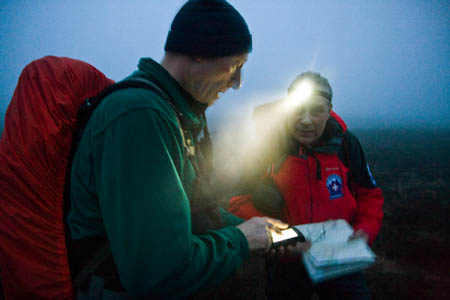
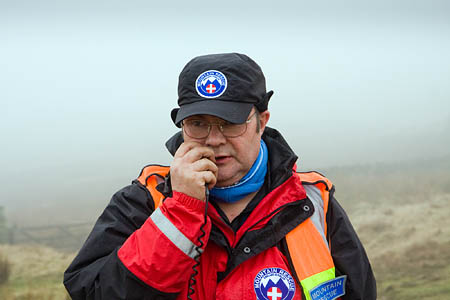
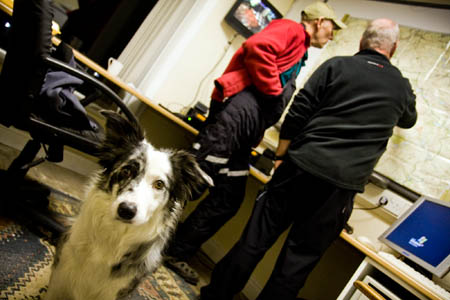
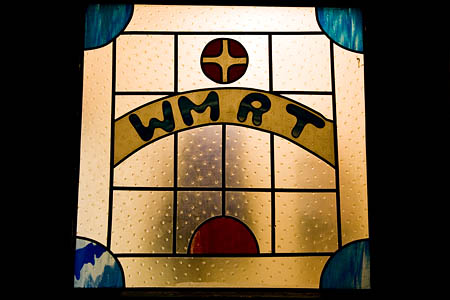
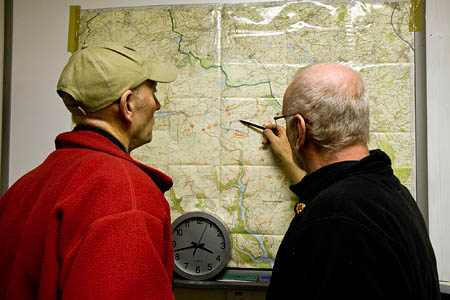
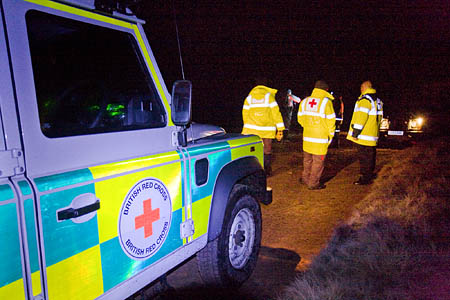
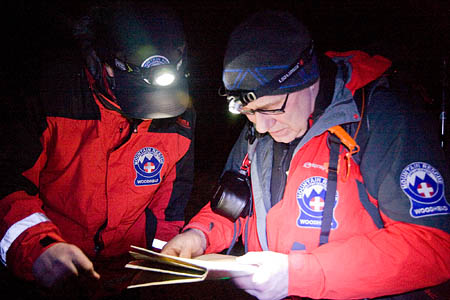
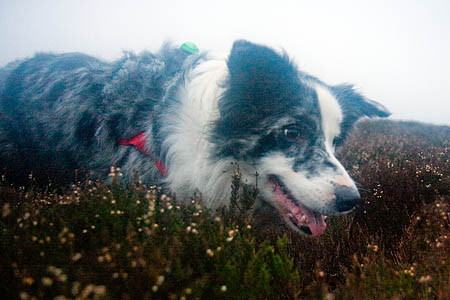
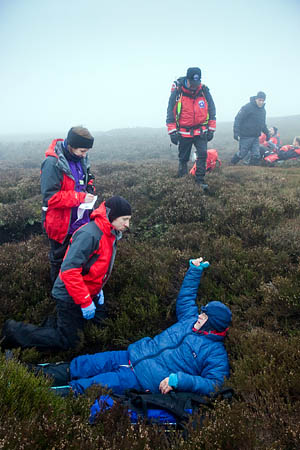
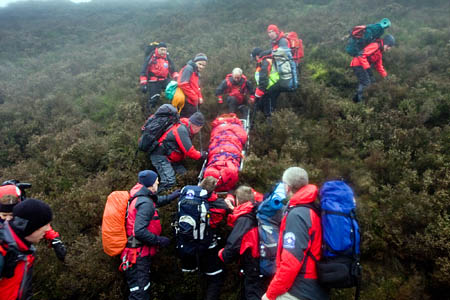

Dave Walker
14 March 2011I was thinking of you all out in the cold while I was relaxing after my adventure on Kilimanjaro with fellow team mate Brian. Sounds like we missed an excellent training night, but not as good as the evening we were having relaxing with our group and a few bottles of wine.
Dave W
Steve Raynor
15 March 2011Thanks Bob for a great report, you've told it as it was and got the story across in a good manner. Thanks for the company as well, we enjoyed having you with us. Abbie especially liked having you around and has nominated you as head ball thrower.
Hope we see you again
Steve R
Chris Walker
15 March 2011Well done you lot. I was actually working up in Scotland that weekend so I was unable to attend. I will hpefuly get to the next one.
Chris W
Slugsie
07 April 2011I'm constantly surprised that GPS units aren't much more common with hill walkers and rescue units alike. Certainly they shouldn't be absolutely relied upon as your sole means of navigation, but as the primary system they have to be far better than trying to figure your location whilst in a fog bank.
Anyway, nice article. :)